
Dr. Kenneth Rosenthal
Dr. Jonathan C. O’Quinn
Dr. Michael J. Price

Dr. Kenneth Rosenthal
Dr. Jonathan C. O’Quinn
Dr. Michael J. Price
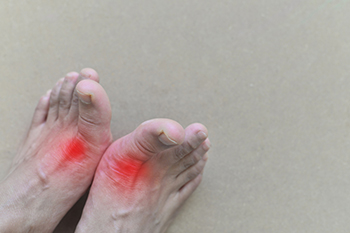
Gout, a form of inflammatory arthritis, manifests through a distinctive set of symptoms that characterize its presence. One of the most common signs is sudden, intense joint pain, often affecting the big toe. This pain is typically accompanied by swelling and redness around the affected joint, creating a visibly inflamed and tender area. The onset of gout attacks can be abrupt, with discomfort escalating rapidly. Limited mobility in the affected joint is a prevalent consequence, making it challenging for individuals to bear weight or move the joint freely. Gout attacks can also induce a discomfort that persists even between episodes. Recognizing these signs is essential for a timely diagnosis and intervention. Seeking medical advice and exploring lifestyle modifications can mitigate the impact of gout, allowing individuals to manage symptoms and lead a more comfortable, mobile life. Gout can cause extreme pain and discomfort. If you have had one or frequent gout attacks, it is strongly suggested that you are under the care of a podiatrist who can help you to successfully manage this condition.
Gout is a painful condition that can be treated. If you are seeking treatment, contact one of our podiatrists from Eastern Carolina Foot & Ankle Specialists. Our doctors will treat your foot and ankle needs.
What Is Gout?
Gout is a form of arthritis that is characterized by sudden, severe attacks of pain, redness, and tenderness in the joints. The condition usually affects the joint at the base of the big toe. A gout attack can occur at any random time, such as the middle of the night while you are asleep.
Symptoms
Risk Factors
Prior to visiting your podiatrist to receive treatment for gout, there are a few things you should do beforehand. If you have gout you should write down your symptoms--including when they started and how often you experience them, important medical information you may have, and any questions you may have. Writing down these three things will help your podiatrist in assessing your specific situation so that he or she may provide the best route of treatment for you.
If you have any questions, please feel free to contact our office located in Greenville, NC . We offer the newest diagnostic and treatment technologies for all your foot care needs.
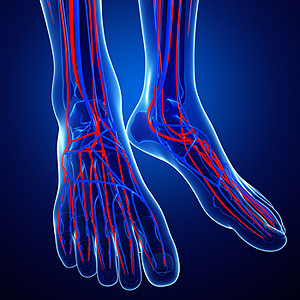
Poor foot circulation can be attributed to various factors that compromise the efficient flow of blood to the lower extremities. One significant contributor is sedentary lifestyle habits, where prolonged periods of sitting or standing impede blood circulation. Obesity, another common factor, places additional stress on the circulatory system, hindering optimal blood flow to the feet. Smoking, notorious for its adverse impact on vascular health, narrows blood vessels and exacerbates circulation issues. Medical conditions, such as diabetes and peripheral artery disease, or PAD, are also primary culprits, causing damage to blood vessels and restricting blood supply to the feet. Moreover, age-related changes in blood vessels can contribute to diminished circulation. Implementing lifestyle changes, maintaining a healthy weight, and staying physically active, are vital steps towards enhancing blood flow to the feet and promoting overall foot health. If you are afflicted with poor blood circulation and it is affecting your feet, it is strongly suggested that you are under the care of a podiatrist who can help you to manage this condition.
While poor circulation itself isn’t a condition; it is a symptom of another underlying health condition you may have. If you have any concerns with poor circulation in your feet contact one of our podiatrists of Eastern Carolina Foot & Ankle Specialists. Our doctors will treat your foot and ankle needs.
Poor Circulation in the Feet
Peripheral artery disease (PAD) can potentially lead to poor circulation in the lower extremities. PAD is a condition that causes the blood vessels and arteries to narrow. In a linked condition called atherosclerosis, the arteries stiffen up due to a buildup of plaque in the arteries and blood vessels. These two conditions can cause a decrease in the amount of blood that flows to your extremities, therefore resulting in pain.
Symptoms
Some of the most common symptoms of poor circulation are:
Treatment for poor circulation often depends on the underlying condition that causes it. Methods for treatment may include insulin for diabetes, special exercise programs, surgery for varicose veins, or compression socks for swollen legs.
As always, see a podiatrist as he or she will assist in finding a regimen that suits you. A podiatrist can also prescribe you any needed medication.
If you have any questions, please feel free to contact our office located in Greenville, NC . We offer the newest diagnostic and treatment technologies for all your foot care needs.
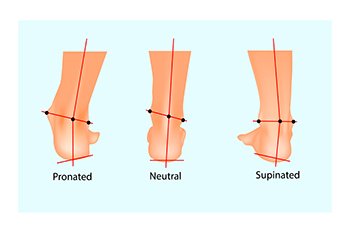
Overpronation, the inward rolling of the foot during the gait cycle, can pose challenges for runners, potentially leading to various injuries. While some pronation is natural and necessary, excessive overpronation may result in plantar fasciitis and other conditions. The delicate balance between foot mobility and stability is important for runners who repeatedly land on one leg. Ankle stability plays a pivotal role in healthy running, and choosing the right running shoes is a key factor. To determine your pronation type, stand on one foot in front of a mirror and observe any wobbling or medial arch collapse. For those who overpronate, selecting shoes with medial arch support and a wider heel can enhance stability during runs. Addressing overpronation involves strengthening weakened muscles. Exercises such as squats, calf raises, lunges, and single-leg deadlifts contribute to foot and ankle strength. Specific drills like heel walks and toe walks target foot stabilizers and may reduce the risk of overpronation-related injuries. Understand your pronation type and incorporate targeted exercises to mitigate injury risks. For a full gait analysis and pronation assessment, it is suggested that you schedule an appointment with a podiatrist.
If you have any concerns about your feet, contact one of our podiatrists from Eastern Carolina Foot & Ankle Specialists. Our doctors can provide the care you need to keep you pain-free and on your feet.
Biomechanics in Podiatry
Podiatric biomechanics is a particular sector of specialty podiatry with licensed practitioners who are trained to diagnose and treat conditions affecting the foot, ankle and lower leg. Biomechanics deals with the forces that act against the body, causing an interference with the biological structures. It focuses on the movement of the ankle, the foot and the forces that interact with them.
A History of Biomechanics
Modern technological improvements are based on past theories and therapeutic processes that provide a better understanding of podiatric concepts for biomechanics. Computers can provide accurate information about the forces and patterns of the feet and lower legs.
Understanding biomechanics of the feet can help improve and eliminate pain, stopping further stress to the foot.
If you have any questions please feel free to contact our office located in Greenville, NC . We offer the newest diagnostic and treatment technologies for all your foot and ankle needs.
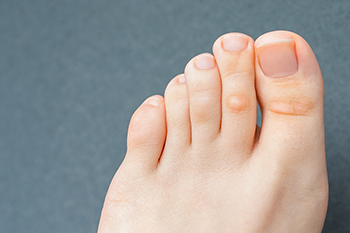
Corns, those small, localized areas of thickened skin on the feet, often develop as a result of repeated friction and pressure. Wearing ill-fitting shoes or high heels are common culprits, subjecting specific areas of the feet to constant rubbing and stress. The body's natural response is to protect itself by forming corns, which can be painful and uncomfortable. To reduce pressure and alleviate the discomfort associated with corns, individuals should prioritize wearing well-fitted, comfortable shoes with adequate padding and support. Additionally, regularly moisturizing the feet helps to soften the skin, reducing friction and the likelihood of corn formation. It is essential to avoid using over-the-counter corn removal products, as they can be harsh and may worsen the condition. Instead, seeking advice from a podiatrist ensures a tailored approach to managing corns, addressing their root causes, and providing relief from the persistent pressure that contributes to their formation. If you have developed a corn, it is suggested that you contact this type of doctor who can offer you correct treatment solutions.
Corns can make walking very painful and should be treated immediately. If you have questions regarding your feet and ankles, contact one of our podiatrists of Eastern Carolina Foot & Ankle Specialists. Our doctors will treat your foot and ankle needs.
Corns: What Are They? And How Do You Get Rid of Them?
Corns are thickened areas on the skin that can become painful. They are caused by excessive pressure and friction on the skin. Corns press into the deeper layers of the skin and are usually round in shape.
Ways to Prevent Corns
There are many ways to get rid of painful corns such as:
Treating Corns
Although most corns slowly disappear when the friction or pressure stops, this isn’t always the case. Consult with your podiatrist to determine the best treatment option for your case of corns.
If you have any questions please feel free to contact our office located in Greenville, NC . We offer the newest diagnostic and treatment technologies for all your foot and ankle needs.
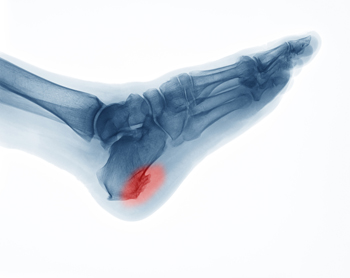
Heel spurs are bony protrusions that form on the underside of the heel bone. They can cause intense heel pain, although the spur itself may not always be the direct source of discomfort. Heel spurs do not typically disappear on their own. However, the pain and discomfort they cause can often be managed effectively through various treatments. Treatment primarily focuses on addressing the underlying condition, such as plantar fasciitis, which is often the root cause of heel spur related pain. Common approaches to managing heel spur pain can include rest and stretching exercises to improve foot flexibility. Wearing supportive footwear with adequate cushioning and arch support can alleviate pressure on the heel. Orthotic inserts are often recommended to distribute pressure more evenly. Additionally, anti-inflammatory medications or corticosteroid injections may be used to reduce pain and inflammation. In severe cases, advanced treatments like shockwave therapy may be considered. Surgery to remove the heel spur is reserved for situations where conservative treatments prove ineffective. If you have a heel spur, it is suggested that you schedule an appointment with a podiatrist for an examination, diagnosis, and the best treatment plan for you.
Heel spurs can be incredibly painful and sometimes may make you unable to participate in physical activities. To get medical care for your heel spurs, contact one of our podiatrists from Eastern Carolina Foot & Ankle Specialists. Our doctors will do everything possible to treat your condition.
Heels Spurs
Heel spurs are formed by calcium deposits on the back of the foot where the heel is. This can also be caused by small fragments of bone breaking off one section of the foot, attaching onto the back of the foot. Heel spurs can also be bone growth on the back of the foot and may grow in the direction of the arch of the foot.
Older individuals usually suffer from heel spurs and pain sometimes intensifies with age. One of the main condition's spurs are related to is plantar fasciitis.
Pain
The pain associated with spurs is often because of weight placed on the feet. When someone is walking, their entire weight is concentrated on the feet. Bone spurs then have the tendency to affect other bones and tissues around the foot. As the pain continues, the feet will become tender and sensitive over time.
Treatments
There are many ways to treat heel spurs. If one is suffering from heel spurs in conjunction with pain, there are several methods for healing. Medication, surgery, and herbal care are some options.
If you have any questions feel free to contact our office located in Greenville, NC . We offer the latest in diagnostic and treatment technology to meet your needs.